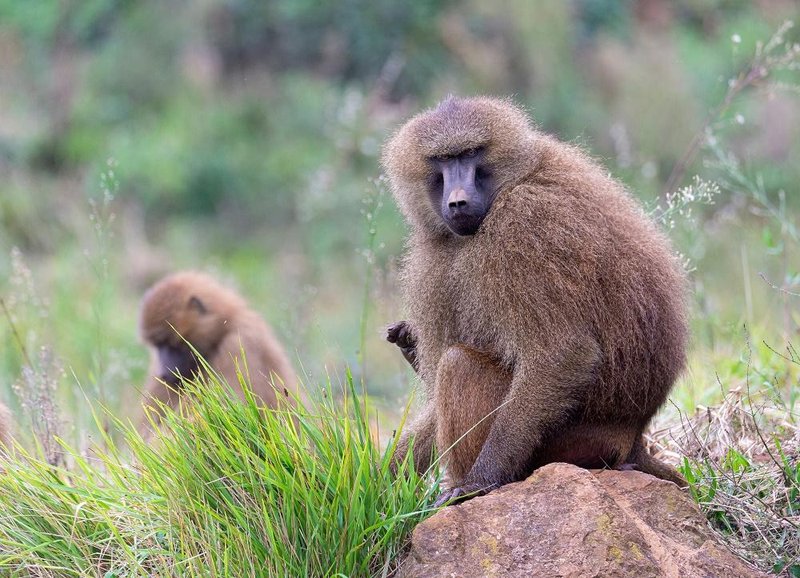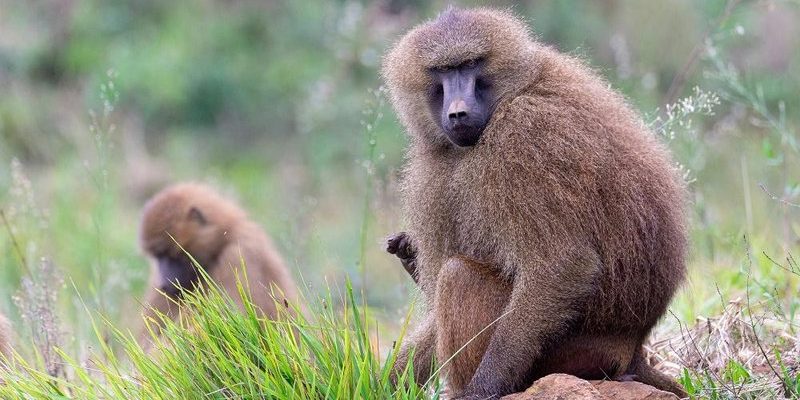
Imagine you’re sitting with a friend over coffee, and you start discussing the culinary habits of this monkey. Unlike the straightforward diet of many animals, guinea baboons have a complex relationship with food that involves both gathering and hunting. Let me explain how they navigate their environment to get what they need to thrive.
Understanding the Guinea Baboon
Before diving into the intricacies of their diet and hunting strategies, let’s get familiar with the guinea baboon itself. These primates are native to West Africa, particularly in places like Guinea and Senegal. Unlike their larger cousins, the olive or yellow baboons, guinea baboons are smaller and tend to live in smaller groups.
You might be wondering how these factors influence their food choices. Well, their environment is a blend of savannas, woodlands, and grasslands, rich in various plants and wildlife. This mix is a buffet for them, but their size and social structure play a part in how they interact with it. Being smaller means they have to be more agile and clever when foraging for food.
The Diet of Guinea Baboons
Guinea baboons are considered opportunistic eaters. This means they don’t have a completely set menu—they adapt based on what’s available. Their diet is a mix of fruits, seeds, tubers, and small animals. You might picture them munching on juicy fruits or digging up tubers, which are starchy roots underground.
Let’s break it down. Here’s a taste of what’s on their menu:
- Fruits: Baboons enjoy various fruits, from ripe bananas to berries, which are a significant source of vitamins.
- Seeds: They often rummage through grass to find seeds, which provide essential nutrients.
- Insects: Baboons won’t shy away from small insects, which can be a quick and protein-packed snack.
- Tubers: These starchy roots can be a crucial energy source, especially during dry seasons.
You see, guinea baboons are not picky eaters, and that flexibility helps them adapt to seasonal changes. When certain foods are scarce, they shift their focus and find nutrients in other offerings from their surroundings.
Foraging Strategies
When it comes to finding food, guinea baboons have perfected their foraging techniques. They often work together in groups, which is a significant advantage. Think of it like friends collaborating on an exciting scavenger hunt. They communicate with each other, using various sounds and gestures, to indicate where food might be located.
One effective strategy is their scouting behavior. Some baboons will take the lead, exploring the area for potential food sources while the rest stay alert for predators. This teamwork not only maximizes their chances of finding food but also keeps them safe.
Additionally, guinea baboons use their intelligence to adapt to different environments. For instance, they may use tools—like sticks—to extract insects or dig into the ground for tubers. Imagine how resourceful that is! Their curiosity and problem-solving skills help them find food in creative ways.
Hunting Behavior
Although primarily omnivorous and foragers, guinea baboons do occasionally hunt. However, their hunting strategies differ from animals that primarily rely on meat for sustenance. They often target small animals like rodents or birds, particularly when fruits and vegetation are less abundant.
Most of the time, their hunting is a social affair. They’ll team up and chase after prey, using their strength in numbers. This can be quite the spectacle—picture a well-orchestrated performance where each baboon plays a role, coordinating to catch a meal.
Interestingly, their hunting tactics also involve clever use of their environment. For example, they might surround an area where a bird is nesting, forcing it to flee. Their social structure allows them to communicate effectively during these hunts, increasing their chances of success.
Seasonal Changes and Their Impact on Diet
The seasons play a crucial role in shaping the diet of guinea baboons. During the rainy season, fruits and vegetation are abundant, which leads to a more plant-based diet. As the seasons shift and food becomes harder to find, they’ll adapt by hunting more or digging for tubers.
This flexibility is essential for their survival. During dry periods, when fruits might be sparse, they rely more on their foraging skills and hunting behavior. It’s fascinating to see how these baboons adjust and thrive despite changing conditions.
Hunger can lead to innovative solutions. Research has shown that guinea baboons may even travel longer distances to find food. It’s like going the extra mile for your favorite meal when the local diner is closed!
Social Dynamics and Food Sharing
Another interesting aspect of guinea baboons’ diet is how social dynamics come into play. They often share food, creating bonds and reducing tensions within their troops. Sharing serves many purposes—it helps solidify social structures and offers opportunities for nurturing relationships.
When one baboon finds something delicious, it may call others over to partake, fostering a sense of community. This sharing behavior can also include grooming each other, which is an essential social activity. It’s like a two-for-one deal—food and friendship all at once!
Furthermore, some baboons might even share the spoils of a hunt. After a successful catch, they’ll often distribute bits to their friends, which can enhance their social standing within the group. Talk about a win-win situation!
In conclusion, the diet and hunting strategies of the guinea baboon demonstrate their adaptability and intelligence. From their varied diet of fruits, seeds, and occasional hunting, to their remarkable foraging techniques and social dynamics, these baboons navigate their world with skill and cooperation.
When you think about it, their lives resemble a bustling buffet—always changing, with plenty of options and a bit of strategy involved. Surviving in the wild is less about brute force and more about cleverness and teamwork. Observing these behaviors not only deepens our understanding of guinea baboons but also enriches our appreciation for the complexities of wildlife. So, the next time you hear about these lively primates, remember: their journey for food is as intriguing as it is essential for their survival.

